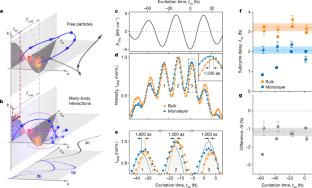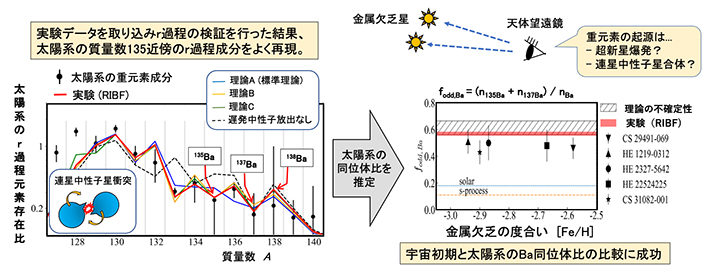新しい技術により、現在のコンピューターの100万倍から10億倍の処理速度が可能になり、多体系物理学の進展に拍車がかかる可能性がある。 New technique could enable processing speeds a million to a billion times faster than today’s computers and spur progress in many-body physics
2022-10-12 ミシガン大学
電子が1,000億分の1秒単位で動く様子を見ることで、処理速度を現在の10億分の1にまで押し上げることができる。さらに、この研究は、多体系物理学の研究に「画期的な」ツールを提供するものである。
研究者たちは、半導体電子の動きと同じエネルギースケールを持つ2つの光パルスを採用した。1つ目の赤外光パルスは、電子を材料中を移動できる状態にする。次に、低エネルギーのテラヘルツパルスで、電子を制御された正面衝突の軌道に追い込む。この衝突の正確なタイミングから、量子情報やエキゾチック量子物質の背後にある相互作用が明らかになった。
電子の状態とエネルギー的に一致するパルスと、電子の状態を変化させる第2のパルスを使い、この2つのパルスが電子の量子状態をどのように変化させるかを撮影し、それを時間の関数として表現することができる。
この2つのパルスシーケンスによって、電子を加速するテラヘルツ波の振動周期の1%よりも優れた精度で時間測定が可能になった。
<関連情報>
- https://news.umich.edu/seeing-electron-movement-at-fastest-speed-ever-could-help-unlock-next-level-quantum-computing/
- https://www.nature.com/articles/s41586-022-05190-2
ブロッホ電子間の相関のアト秒クロッキング Attosecond clocking of correlations between Bloch electrons
J. Freudenstein,M. Borsch,M. Meierhofer,D. Afanasiev,C. P. Schmid,F. Sandner,M. Liebich,A. Girnghuber,M. Knorr,M. Kira & R. Huber
Nature Published:12 October 2022
DOI:https://doi.org/10.1038/s41586-022-05190-2

Abstract
Delocalized Bloch electrons and the low-energy correlations between them determine key optical1, electronic2 and entanglement3 functionalities of solids, all the way through to phase transitions4,5. To directly capture how many-body correlations affect the actual motion of Bloch electrons, subfemtosecond (1 fs = 10−15 s) temporal precision6,7,8,9,10,11,12,13,14,15 is desirable. Yet, probing with attosecond (1 as = 10−18 s) high-energy photons has not been energy-selective enough to resolve the relevant millielectronvolt-scale interactions of electrons1,2,3,4,5,16,17 near the Fermi energy. Here, we use multi-terahertz light fields to force electron–hole pairs in crystalline semiconductors onto closed trajectories, and clock the delay between separation and recollision with 300 as precision, corresponding to 0.7% of the driving field’s oscillation period. We detect that strong Coulomb correlations emergent in atomically thin WSe2 shift the optimal timing of recollisions by up to 1.2 ± 0.3 fs compared to the bulk material. A quantitative analysis with quantum-dynamic many-body computations in a Wigner-function representation yields a direct and intuitive view on how the Coulomb interaction, non-classical aspects, the strength of the driving field and the valley polarization influence the dynamics. The resulting attosecond chronoscopy of delocalized electrons could revolutionize the understanding of unexpected phase transitions and emergent quantum-dynamic phenomena for future electronic, optoelectronic and quantum-information technologies.



